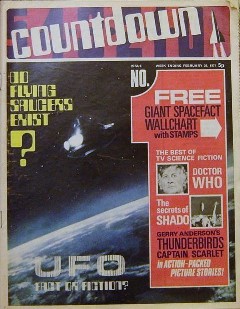
A book is a medium for recording information in the form of writing or images. Modern books are typically in codex format, composed of many pages that are bound together and protected by a cover. They were preceded by several older formats, such as the scroll and the tablet. The book publishing process is the series of steps involved in their creation and dissemination.

Publishing is the activity of making information, literature, music, software, and other content available to the public for sale or for free. Traditionally, the term refers to the creation and distribution of printed works, such as books, comic books, newspapers, and magazines. With the advent of digital information systems, the scope has expanded to include digital publishing such as e-books, digital magazines, websites, social media, music, and video game publishing.

Print on demand (POD) is a printing technology and business process in which book copies are not printed until the company receives an order, allowing prints in single or small quantities. While other industries established the build-to-order business model, POD could only develop after the beginning of digital printing because it was not economical to print single copies using traditional printing technologies such as letterpress and offset printing.

A paperback book is one with a thick paper or paperboard cover, and often held together with glue rather than stitches or staples. In contrast, hardback (hardcover) books are bound with cardboard covered with cloth, leather, paper, or plastic.

A small press is a publisher with annual sales below a certain level or below a certain number of titles published. The terms "indie publisher" and "independent press" and others are sometimes used interchangeably.
The bibliographical definition of an edition is all copies of a book printed from substantially the same setting of type, including all minor typographical variants.
Dover Publications, also known as Dover Books, is an American book publisher founded in 1941 by Hayward and Blanche Cirker. It primarily reissues books that are out of print from their original publishers. These are often, but not always, books in the public domain. The original published editions may be scarce or historically significant. Dover republishes these books, making them available at a significantly reduced cost.

RepRap is a project to develop low-cost 3D printers that can print most of their own components. As open designs, all of the designs produced by the project are released under a free software license, the GNU General Public License.

Countdown was a British comic published weekly by Polystyle Publications – ultimately, under several different titles – from early 1971 to late summer 1973. The pages in each issue were numbered in reverse order, with page 1 at the end – a gimmick which was derived from the comic's title in order to create a countdown to the number one every week.

The three-volume novel was a standard form of publishing for British fiction during the nineteenth century. It was a significant stage in the development of the modern novel as a form of popular literature in Western culture.

A photo book or photobook is a book in which photographs make a significant contribution to the overall content. A photo book is related to and also often used as a coffee table book.
Purnell and Sons started out as a small family printers based in Somerset which merged with other printers over the next 100 years to become one of the largest print groups in the UK and at one time a major publisher.
The Eastern Color Printing Company was a company that published comic books, beginning in 1933. At first, it was only newspaper comic strip reprints, but later on, original material was published. Eastern Color Printing was incorporated in 1928, and soon became successful by printing color newspaper sections for several New England and New York papers. Eastern is most notable for its production of Funnies on Parade and Famous Funnies, two publications that gave birth to the American comic book industry.
A manuscript culture is a culture that depends on hand-written manuscripts to store and disseminate information. It is a stage that most developed cultures went through in between oral culture and print culture. Europe entered the stage in classical antiquity. In early medieval manuscript culture, monks copied manuscripts by hand. They copied not just religious works, but a variety of texts including some on astronomy, herbals, and bestiaries. Medieval manuscript culture deals with the transition of the manuscript from the monasteries to the market in the cities, and the rise of universities. Manuscript culture in the cities created jobs built around the making and trade of manuscripts, and typically was regulated by universities. Late manuscript culture was characterized by a desire for uniformity, well-ordered and convenient access to the text contained in the manuscript, and ease of reading aloud. This culture grew out of the Fourth Lateran Council (1215) and the rise of the Devotio Moderna. It included a change in materials, and was subject to remediation by the printed book, while also influencing it.

The history of printing starts as early as 3000 BCE, when the proto-Elamite and Sumerian civilizations used cylinder seals to certify documents written in clay tablets. Other early forms include block seals, hammered coinage, pottery imprints, and cloth printing. Initially a method of printing patterns on cloth such as silk, woodblock printing for texts on paper originated in China by the 7th century during the Tang dynasty, leading to the spread of book production and woodblock printing in other parts of Asia such as Korea and Japan. The Chinese Buddhist Diamond Sutra, printed by woodblock on 11 May 868, is the earliest known printed book with a precise publishing date. Movable type was invented by Chinese artisan Bi Sheng in the 11th century during the Song dynasty, but it received limited use compared to woodblock printing. However, the use of copper movable types was documented in a Song-era book from 1193, and the earliest printed paper money using movable metal type to print the identifying codes were made in 1161. The technology also spread outside China, with the oldest extant printed book using metal movable type being the Jikji, printed in Korea in 1377 during the Goryeo era.

In literature, a serial is a printing or publishing format by which a single larger work, often a work of narrative fiction, is published in smaller, sequential instalments. The instalments are also known as numbers, parts, fascicules or fascicles, and may be released either as separate publications or within sequential issues of a periodical publication, such as a magazine or newspaper.

A newspaper is a periodical publication containing written information about current events and is often typed in black ink with a white or gray background. Newspapers can cover a wide variety of fields such as politics, business, sports, art, and science. They often include materials such as opinion columns, weather forecasts, reviews of local services, obituaries, birth notices, crosswords, editorial cartoons, comic strips, and advice columns.
Purnell's History of the Second World War was a hugely successful weekly anthology or 'partwork' publication covering all aspects of the Second World War that was distributed throughout the English-speaking world. Produced shortly before the similarly accomplished 8-volume series on the First World War, it was first published in 1966, being reprinted several times during the 1970s. The magazine was notable for its use of many writers – often well-known military figures – of many nationalities to present a rounded view of the subject. This was combined with high-quality original artwork of the military hardware used, maps and numerous unseen photographs, some of them quite gruesome.

The Leadenhall Press was founded by Andrew White Tuer (1838–1900), and originated as the publishing arm of the Field & Tuer partnership in London. This development followed their 1868 relocation to 50 Leadenhall Street. Initially founded in 1862, the firm began as job printers, stationers, and manufacturers when Tuer teamed up with Abraham Field (1830–1891), known for producing registers and log books. A significant early achievement was Tuer's invention of Stickphast Paste, a vegetable-based adhesive. It rapidly became a staple in offices, and its production continued under various owners well into the mid-20th century.
Instant book is a term used in publishing to describe a book that has been produced and published very quickly to meet market demand.














